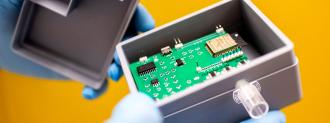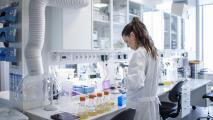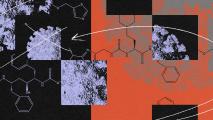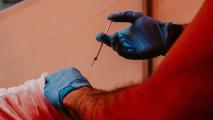International efforts are underway, from the U.S. to Israel to Finland, to create a coronavirus breathalyzer that could speed testing as science and society struggle to regain control from SARS-Cov-2.
The notion is poetic: using our breath — the very vector by which the virus is most effectively spread — to detect and, hopefully, contain it.
The models are still in the prototype phase, but the developers are optimistic.
“It’s a lot more efficient,” Nora Grotenfelt, chief doctor at Helsinki’s Laakso Health Station, told NBC News in July. “It’s almost real-time, the results. It’s a lot cheaper, and it’s a lot more convenient.”
The Race for a Coronavirus Breathalyzer
The ability to test for COVID-19 rapidly, regularly, and cheaply is necessary to begin reopening society in earnest, experts generally agree — even if that speed comes at the sacrifice of some accuracy.
A coronavirus breathalyzer holds obvious appeal: it can be wielded by just about anyone, requires no chemical reagents or expensive machines, and could be deployed easily in any number of environments, from airports to concerts.
Teams at Ohio State and Northeastern are in varying stages of coronavirus breathalyzer development, with both hoping to get emergency-use authorization from the FDA — a special exemption during public health emergencies that allows for new medical devices to be used without the usual rigors of official approval.
“Breath analysis is not really a technique that is used widely in the medical field yet, so it is considered early-stage work,” Perena Gouma, the principal investigator of the Ohio State team, told Ohio State News.
Gouma’s group began running clinical trials at the Ohio State Wexner Medical Center and COVID-19 testing sites around Columbus, WIRED reports. The Buckeye breathalyzer is a continuation of work Gouma did at the University of Texas at Arlington, where she built a breathalyzer to detect another, far more common respiratory foe: influenza.
Rather than testing for the virus’s genetic material (like the slow, expensive PCR tests that dominate current US testing), the coronavirus breathalyzer uses ceramic sensors to detect nitric oxide and volatile organic compounds — compounds which become gases easily — in the breath. Gouma believes these can serve as biomarkers for COVID-19.
(She’s a bit cagey about what these biomarkers are specifically, according to WIRED, and the work’s not published yet.)
While the innards are idiosyncratic, a coronavirus breathalyzer works a lot like any other kind: subjects blow into a disposable mouthpiece, and the device offers a result quickly — within 15 seconds, Gouma has told various outlets.
Meanwhile, on the East Coast, a team at Northeastern, led by electrical and computer engineering professor Nian Sun, is working on a coronavirus breathalyzer of their own.
The Northeastern device utilizes electrochemical sensors that are pied with tiny holes that exactly match the shape of SARS-CoV-2’s spike protein, the virus’s weapon of choice. When the virus passes over the sensors, its spike protein fits into the mold, allowing it to be detected. According to WIRED, LED lights — green, yellow, and red — then tell users if they are negative, need further testing (or another breath) or have tested positive.
Using these specific molds to catch the virus makes their coronavirus breathalyzer highly accurate, Sun told News@Northeastern, with detection rates comparable to PCR testing in his lab. As with Gouma’s — and all the others still coming — more testing will need to be done on the way to an emergency use authorization.
“This is technology that can dramatically change the landscape of COVID-19 testing because it is easily two orders of magnitude faster than the best technology nowadays,” Sun told News@Northeastern. “In reopening businesses, schools, universities — essentially, it is life-saving technology.”
A Breath Away
Making sure the device is accurate enough, however, could be challenging. Our breath contains many more compounds than just those associated with COVID-19, and such a noisy medium will require special care to analyze effectively.
Regarding the Ohio State design, Raed Dweik, chair of the Cleveland Clinic Respiratory Institute, told WIRED that compounds coming from our bodies and even the environment could potentially cloud results.
“When patients come to me (after) driving on the highway, I can detect diesel exhaust on their breath.”
But Dweik has studied breath-based diagnosis for other diseases, and is cautiously optimistic about the potential of a coronavirus breathalyzer.
“The potential is huge,” Dweik told WIRED, but “breath testing, or any test, has to be done accurately.”






